Laboratory of Proteases
Head:
Mgr. Klára Grantz Šašková, Ph.D.
Where to Find Us:
BIOCEV, Průmyslová 595, Vestec, 252 42
the first floor, between Wings 4 and 6 (rooms 108, 109)
Team MembersMethodology and Technical SupportScientific CollaborationsPublications |
TeachingProposed Topics of Theses for New StudentsStudent Theses in ProgressPast Student Theses |
Research Interests
The Laboratory of Proteases became part of the Department of Genetics and Microbiology in 2016 after separating from Professor Jan Konvalinka’s group at the Institute of Organic Chemistry and Biochemistry of the Czech Academy of Sciences (IOCB) (however, several members of the Laboratory still hold partial positions at IOCB). In 2024, as part of the "Pathogen-Host Interactions" and "Treatment of Viral and Bacterial Infections" programmes we also became affiliated with the National Institute of Virology and Bacteriology, a platform bringing together top scientific institutions across the Czech Republic.
The main research focus of the Laboratory is the study of the biology of the hepatitis B virus (HBV), which causes chronic hepatitis B, and the possibilities for treating this unfortunately widespread disease. Current treatment for chronic hepatitis B with nucleotide/nucleoside analogs inhibits the production of new infectious viral particles but does not eliminate cccDNA in hepatocytes. An alternative therapy is treatment with pegylated interferon α, though this leads to functional cure in less than 8% of chronically infected individuals. The Laboratory focuses on characterizing the interactions between viral and cellular proteins at the structural, biochemical, and functional levels, particularly in identifying host proteins that affect viral replication, with the goal of selecting new targets for therapeutic intervention. Additionally, the Laboratory investigates the mechanisms of HBV escape in infected hepatocytes, the interactions between promyelocytic leukemia nuclear bodies and HBV in the nucleus, and the interactions of the HBV core protein (HBc) with host proteins.
The HBc protein is considered a suitable viral target for preclinical investigation. To identify new proteins interacting with HBc, we use a proteomics technique based on proximity-dependent biotinylation (BioID2). In collaboration with other institutions, the Laboratory is engaged in designing and in vitro validation of screening assays to identify small compounds that influence relevant protein-protein interactions. The small molecules discovered so far that modulate the NRF1 (NFE2L1) pathway, responsible for proteasome synthesis and heat shock protein expression, could potentially influence HBV replication.
A crucial step in the HBV life cycle is the existence of stable covalently closed circular DNA (cccDNA), which resides in the nucleus of infected liver cells as a separate plasmid-like molecule, not integrated into the cellular genome, and serves as the transcriptional template for the virus. Its artificial elimination is a key step for the potential treatment of hepatitis B. The Laboratory of Proteases focuses on various strategies for the degradation of HBV cccDNA, particularly the development of nanoparticles that could facilitate the transport of a CRISPR/Cas9 system specifically targeting this cccDNA.
The nanoparticles, developed in collaboration with Petr Cígler, Ph.D., who leads the Synthetic Nanochemistry Group at IOCB, also have other potential applications in biotechnology. These nanoparticles, named XMAN, function universally, meaning they can deliver any type of nucleic acid with similar efficiency, even to cells that are difficult to penetrate, such as hepatocytes or cell lines from certain hematologic tumors that are currently challenging to treat. In 2024, the head of the Laboratory of Proteases, Klára Grantz Šašková, along with Petr Cígler and other colleagues from the IOCB and the First Faculty of Medicine, Charles University, founded the biotechnology start-up Adalid Sciences, aimed at commercially advancing this transport system for various therapeutic nucleic acids.
The second research topic of the Laboratory is the family of DDI1-like proteins (DNA damage-inducible protein 1), which are involved in DNA repair and transcriptional regulation. DDI1-like proteins have been relatively understudied in the past, but in recent years they have become the focus of interest for many research groups. It has been shown that these proteins are important new players in the DNA repair process and in the regulation of transcription. However, the mechanism of their action in both processes remains unclear and is the subject of research conducted in our Laboratory.





















